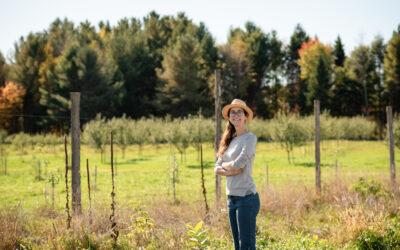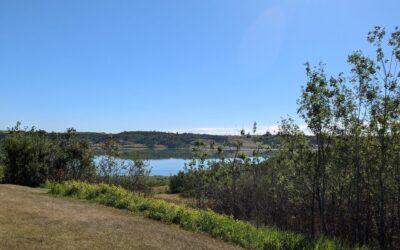A profile of ALUS Norfolk participants Leah & Marty VanTil
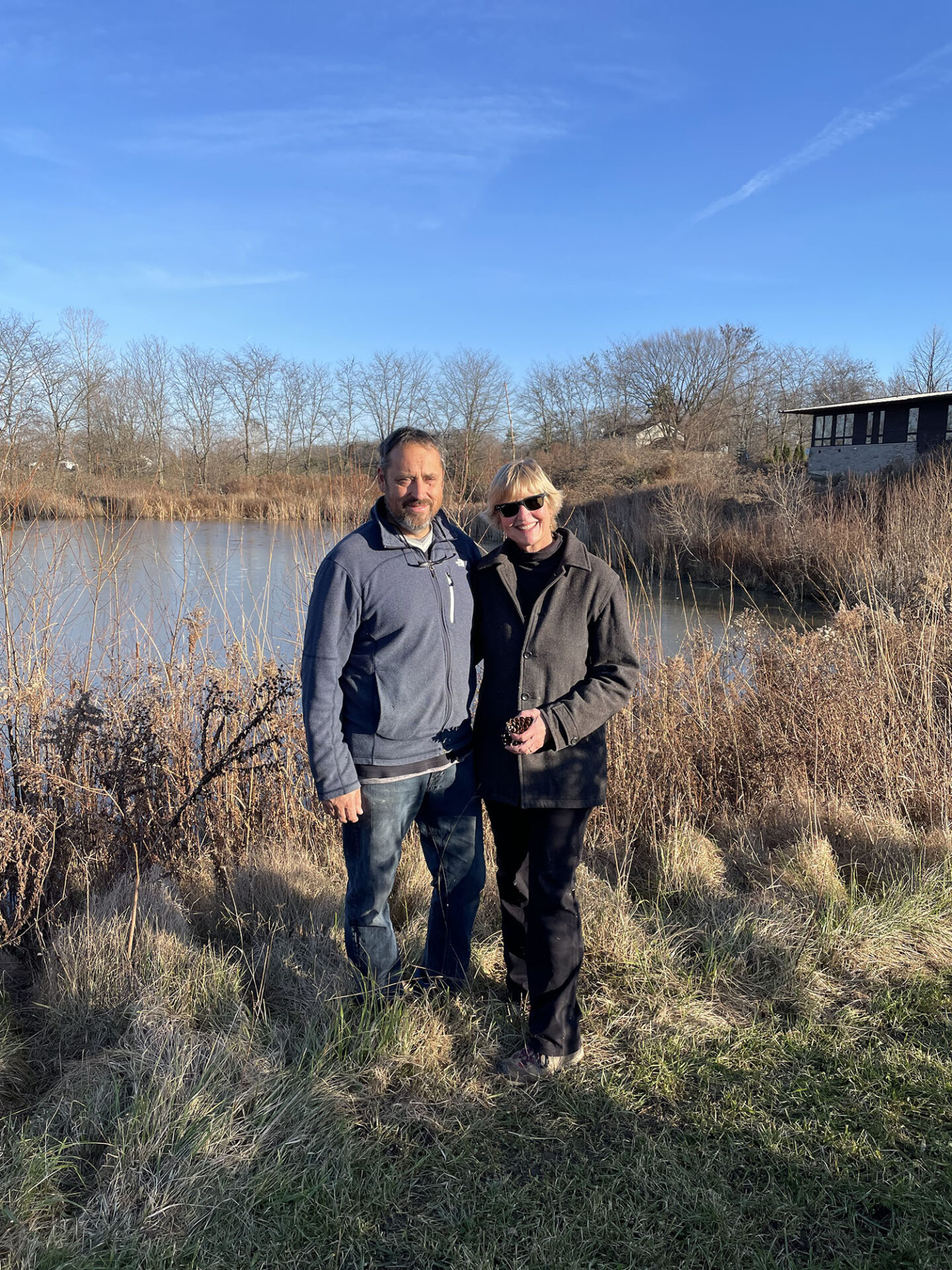
Marty & Leah VanTil with their ALUS wetland in the background. Credit: ALUS Norfolk.
Located in Port Dover, Ontario, Leah and Marty VanTil’s 40-acre farm includes rolling hills and shallow valleys. Several years ago, it also included a cherry orchard. In 2010, the VanTil’s found themselves debating about future priorities for their farm and weighing various options, including how to best manage areas on the farm that were unproductive. They decided to contact ALUS Norfolk after learning about how ALUS could support their goals from a family member.
“Anyone with marginal farmland or areas of their farm to incorporate natural habitat, should not hesitate to contact ALUS,” says Leah. “We are so glad we did.”
Given the topography of the property and the VanTil’s long-term goals for the farm, ALUS staff quickly identified that there was potential for two wetlands, a wooded area, prairie grasses and pollinators. Creating a wooded area was particularly appealing to the VanTils since neighbouring farms already contained forested land. As nature lovers, they knew that additional trees would create a corridor for wildlife.
“We get so much enjoyment from these projects. There has been a definite increase in wildlife, especially in the wetland areas, including frogs, birds and insects,” says Leah.
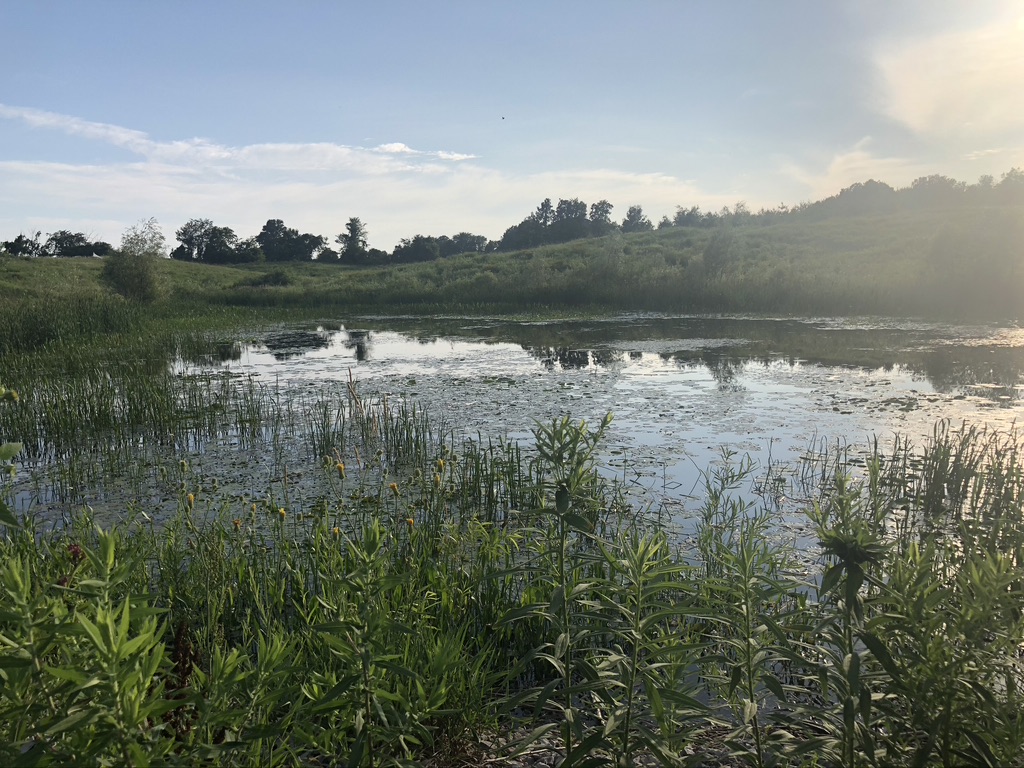
ALUS wetlands provide several benefits including aquatic and terrestrial habitat. Credit: ALUS Norfolk
The VanTil farm is a wonderful example of how environmental projects complement a working farm. Cropland is rented to a neighbour who rotates cash crops, including wheat, corn and soybeans. Cash crops and ALUS projects complement one another on the farm—marginal areas create valuable ecosystem services for the community and wildlife, while conventional crops flourish in more productive areas, benefitting from the ecological function and resilience the VanTils have added with ALUS.
Throughout the year, Leah and Marty spend time on various project maintenance tasks such as repairing wetland berms and removing invasive species. This helps ensure that the projects continue to flourish.
“Each year we look forward to the sound of the early spring peepers and the return of the Red Wing Blackbirds. Later in the spring there may be a family of Merganser ducks with their young following their mother and learning to dive,” says Leah. “Meanwhile, the muskrat is on regular patrol enjoying cattails that line the edge of the ponds. Ducks, geese, herons, and hawks visit throughout the seasons. And then, once again the wetlands freeze over and—when possible—we skate on them.”
With ALUS, the VanTils have created six acres of trees and five acres of tallgrass prairie and complemented those acres with two wetlands on the property. Most recently, the VanTils collaborated with ALUS Norfolk to create a pollinator hedgerow.
While all project types offer unique benefits, the wetlands at the VanTil property are truly breathtaking. Within ALUS Norfolk, wetlands are generally either ephemeral or they retain water year-round, as they do at the VanTil property. Both wetland types provide a great combination of terrestrial and aquatic habitat. Landowners can expect increased wildlife—birds, reptiles, amphibians and insects.
- All
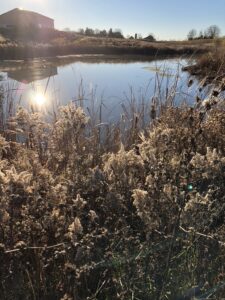
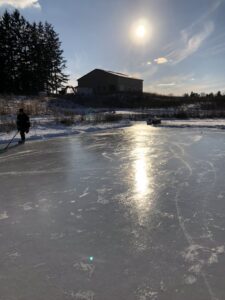
Wetlands tend to be vulnerable to invasive species, so they need to be monitored regularly. The VanTils know that early detection and removal is key, especially with aggressive invasive species like Phragmites. Berms are inspected seasonally for erosion and animal damage and buffers are checked for unwanted vegetation. The VanTils passion for land stewardship is the key to success of their projects.
The rewards of investing in project maintenance are immense. Leah recalls one of her favourite wildlife encounters that involved a deer and her fawn:
“For several days a doe would come to nurse her fawn near the water’s edge. The fawn would then hide in the grassy area that surrounds the pond until the mother doe returned,” she says.
When asked for her favourite photos of the projects depicting wildlife, it was difficult for Leah to provide just a few.
A central principle of ALUS Norfolk is the focus on unproductive, marginal farmland. Determining the best use for those areas was one of the key factors that lead the VandTils to work with ALUS initially. Farm parcels that are too small, too wet, or too difficult to navigate with equipment are ideal for restoration projects and complement agricultural activities.
ALUS Norfolk Team



